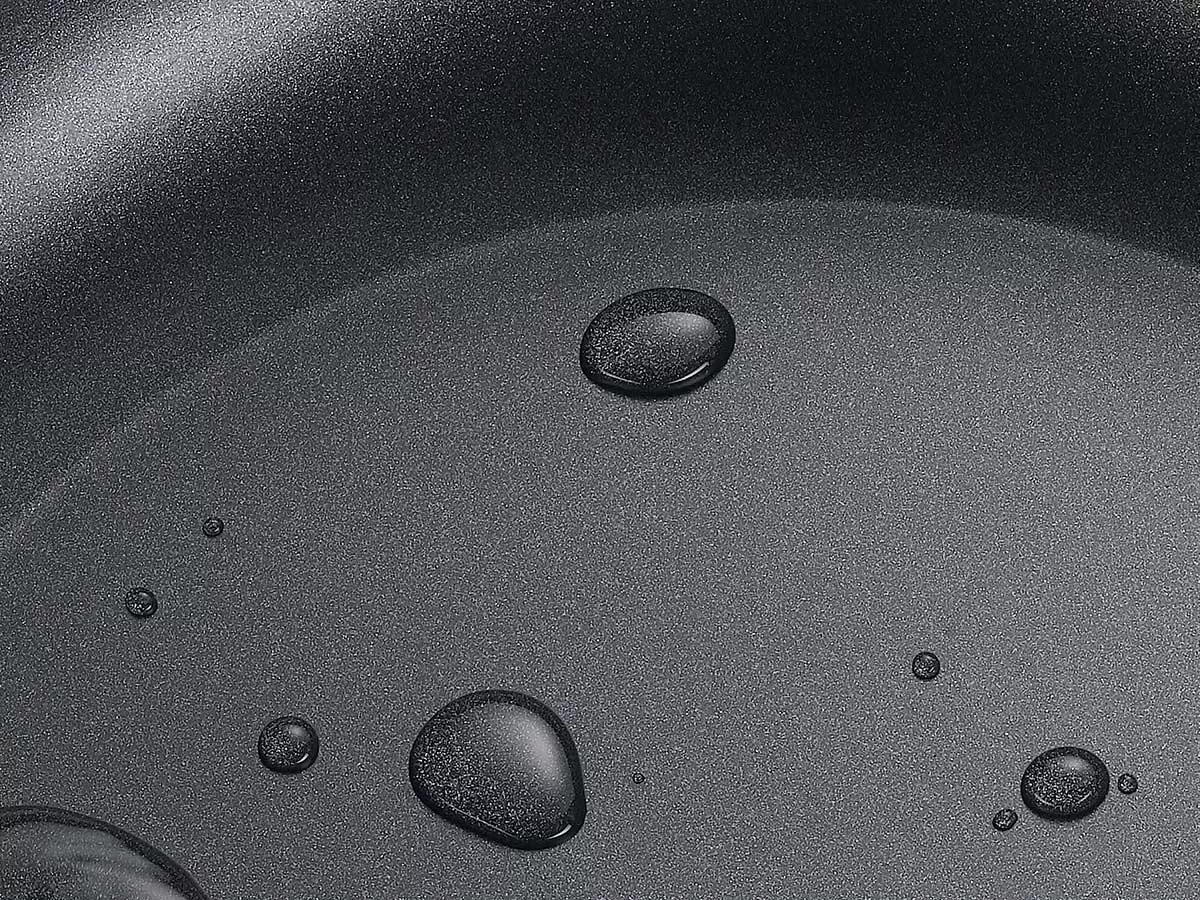Non-stick coatings have revolutionized cookware and become an essential part of kitchens around the world. These coatings provide a smooth, slick surface that prevents food from sticking to pans and makes cleaning much easier. The most common type of non-stick coating is polytetrafluoroethylene (PTFE), also known as Teflon, which was invented in 1938.
The rise of non-stick has transformed cooking by making the process smoother, simpler and more convenient for home cooks around the world.
North America
North America has been an early adopter of non-stick cookware coatings, especially polytetrafluoroethylene (PTFE) like Teflon. PTFE coatings were first introduced in the US in the 1960s and steadily gained popularity through the 1980s and 1990s. Today, PTFE-coated cookware can be found in most North American households.
Several factors drive the high adoption of PTFE in North America:
- Early innovation by chemical companies developing non-stick coatings like DuPont’s discovery of Teflon in 1938. This allowed North American cookware brands to be first to market.
- High consumer emphasis on convenience and ease of cleaning. The non-stick properties of PTFE appeal to busy households.
- Influence of celebrity chefs and cooking shows promoting non-stick pans. This created strong consumer demand.
- High disposable incomes enabling households to buy premium non-stick cookware, which is often more expensive than uncoated alternatives.
- Consumer concerns about potential health risks of non-stick coatings like PTFE are lower compared to other regions.
So in summary, North America was an early pioneer in non-stick cookware and PTFE coatings have become ubiquitous thanks to convenience, disposable income and familiarity over decades of use.
Europe
Europe has seen a major shift towards more natural cookware coatings like ceramic and anodized aluminum in recent years. Concerns over potential health risks of traditional non-stick coatings containing PTFE (Teflon) have prompted many consumers to seek out alternative options.
Ceramic coatings have gained significant popularity in countries like Germany, France and Italy. Ceramic provides a naturally non-stick surface, is free of harmful chemicals, and is generally considered more environmentally friendly. Leading European cookware brands such as Berndes, Ballarini and Cristel offer ceramic-coated product lines.
Anodized aluminum is also on the rise in Europe. Anodization creates a hardened oxidized layer on the surface of aluminum, providing natural non-stick properties without using potentially toxic coatings. Anodized aluminum is appreciated for its durability and scratch-resistance. Major brands like IKEA and Fissler have introduced anodized aluminum cookware targeted at the eco-conscious European consumer.
Scandinavian countries like Denmark and Sweden are opting for uncoated stainless steel pans from brands that emphasize sustainability. This aligns with the cultural preference in Nordic countries for a back-to-basics approach to cooking.
Asia Pacific
The Asia Pacific region has seen significant growth in demand for non-stick cookware in recent years. With a large population and rising incomes, consumers are seeking affordable options to upgrade their kitchenware. Non-stick pans and pots coated with PTFE or ceramic allow home cooks to use less oil and make cleanup easier.
Countries like China, India, and Indonesia have a growing middle class that aspires to modern conveniences. This has led to increased sales of non-stick cookware, often locally produced or imported from Thailand and other lower cost manufacturing hubs. Many cookware brands target first-time buyers of non-stick pans and market the benefits over traditional steel or aluminum pans.
Urbanization and smaller household sizes also favor non-stick cookware that’s convenient and easy to use on modern stovetops. Busy lifestyles mean less time spent cleaning up. The Asia Pacific market is forecast to continue growing steadily as incomes rise across the region.
China
China is a major global hub for manufacturing non-stick cookware. As the world’s largest manufacturer of pans and pots, China produces over 70% of the non-stick cookware on the market today.
Several factors have driven China’s dominance in non-stick cookware production:
- Abundant Manufacturing Infrastructure: China has invested heavily in industrial parks, factories, and logistics networks optimized for high-volume cookware production. Major manufacturing clusters are located in Guangdong, Zhejiang, Jiangsu and Shandong provinces.
- Vertical Integration: Many Chinese manufacturers control the entire supply chain from raw materials to finished products. This enables efficiencies and quality control.
- Low Labor Costs: Cookware production remains a labor-intensive industry. China’s low wages relative to other manufacturing countries has been an advantage.
- Export Focus: While China has a large domestic cookware market, manufacturers have heavily targeted exports as well. China exports non-stick pans worldwide.
- Technology Transfer: China has benefitted from an influx of technical expertise, designs, and technologies from leading global brands that have set up production in China. This knowledge transfer has improved China’s capabilities.
Going forward, China is likely to maintain its leadership in non-stick cookware production through continued investments, economies of scale, and leveraging its skilled workforce. Environmentally-friendly coatings and innovative designs are areas where Chinese manufacturers are seeking to move up the value chain.
India
India is experiencing rapid growth in the adoption of non-stick cookware, driven largely by the expansion of the middle class. With increasing disposable incomes, more Indian households are able to purchase higher quality cookware that makes cooking easier and more convenient.
The Indian middle class is projected to grow from 50 million households today to 150 million households by 2030. This emerging segment of consumers is embracing modern conveniences and appliances for their homes. Non-stick pans are seen as aspirational products that save time and effort in cooking and cleaning.
Several factors make non-stick cookware appealing to Indian consumers:
- Busy lifestyles, especially for working women, create demand for time-saving solutions in the kitchen. Non-stick pans allow for quick cooking and easy cleanup.
- Smaller household sizes mean cooking is done in smaller batches. Non-stick coats make it easier to cook smaller portions that won’t stick.
- Exposure through TV, internet and retail stores has increased awareness of international brands of non-stick cookware.
- Health consciousness is rising. Non-stick pans allow for less oil usage in cooking.
As incomes continue to rise, non-stick cookware is poised to penetrate deeper into the enormous Indian market. Leading brands are investing in product development and marketing specifically targeted at the Indian middle class. With growth in non-stick adoption by younger urban Indians, it may also gradually replace more traditional cookware across the country.
Middle East & Africa
The Middle East and Africa region has seen rapid urbanization and economic development in recent years, driving demand for modern household products like non-stick cookware. As more people migrate to cities, adopt modern lifestyles, and gain greater purchasing power, they are seeking appliances and cookware that offer convenience, ease of use, and modern aesthetics.
Several factors underpin the rising adoption of non-stick cookware in the Middle East and Africa:
- High population growth rates coupled with rapid urbanization. The UN projects that over 50% of the population in Middle East and Africa will be living in cities by 2050. This urban shift is increasing demand for modern housing and appliances.
- A growing middle class with higher disposable incomes. Countries like Saudi Arabia, UAE, and South Africa have a rising middle class that can afford premium household products.
- Exposure to international brands and lifestyles. Increased global connectivity via travel and media is leading to greater awareness of international brands and modern cookware technologies.
- Desire for convenience and ease of use. Non-stick cookware offers quicker cooking and easier cleaning, which appeals to busy urban households.
- Changing dietary patterns and interest in exploring new cuisines. The popularity of international cuisines has also fueled interest in cookware that can meet diverse cooking needs.
- Investments in real estate and housing. Strong construction activity to meet urban housing demand is spurring purchases of appliances and cookware.
Going forward, rising living standards, growing populations, and the proliferation of modern retail across the region will likely accelerate the shift towards non-stick and other modern cookware technologies. Brands that offer quality and competitive pricing can capitalize on the underserved demand.
Latin America
Latin America is experiencing rapid growth in its cookware market, especially in countries like Brazil, Mexico, Argentina, and Colombia. The adoption of non-stick coatings has increased as incomes rise and consumers shift towards more convenient cooking products.
PTFE-based non-stick coatings dominate the market, though there is increasing concern over the potential health risks of these materials when overheated. Studies have linked PTFE coatings to flu-like symptoms from off-gassing at high temperatures. This has led some health agencies in the region to advise caution when using these pans.
As a result, many consumers are shifting towards newer generation non-stick alternatives like ceramic and anodized aluminum coatings. Major cookware brands operating in Latin America have responded by expanding their ceramic cookware offerings. While more expensive than traditional non-stick, ceramic coatings are marketed as a safer and more eco-friendly option.
Several countries have proposed regulations to limit or label cookware coatings containing PTFE and PFOA. If enacted, these could accelerate the transition to alternative non-stick technologies in the region. However, PTFE-based coatings still maintain cost and performance advantages that continue to make them popular, especially among middle and lower income populations.
Environmental Considerations
There is a growing environmental movement pushing cookware manufacturers to adopt more sustainable production methods and materials. Traditional non-stick coatings like PTFE (Teflon) have faced scrutiny over the use of PFOA (perfluorooctanoic acid) in the manufacturing process. PFOA is a toxic chemical that can persist in the environment and has potential human health risks.
In response, many brands have reformulated their non-stick coatings to eliminate PFOA, but there are still concerns around other chemicals used. This has led some consumers to seek out more natural non-stick solutions like ceramic and cast iron cookware. There is also a push for greater use of recycled materials in cookware production to reduce waste.
Some of the sustainability practices being adopted include:
- Using non-toxic, plant-based materials instead of PTFE and other chemicals. For example, brands like GreenPan use a ceramic-based coating called Thermolon that is PFOA-free.
- Increased use of recycled metals like aluminum and stainless steel, which have high reuse potential.
- Responsible sourcing of raw materials through ethical supply chains.
- Improved manufacturing processes to reduce carbon emissions, water use, and waste.
- Compostable packaging made from plant fibers instead of plastics.
As consumers become more aware of sustainability issues, they are demanding greener choices in cookware. Brands that embrace eco-friendly practices while still delivering high performance are likely to attract customer loyalty in the future. There is still progress to be made, but the cookware industry is taking steps to become more sustainable.
Future Outlook
The future of cookware coatings looks bright as manufacturers continue to innovate with new materials and technologies. Ceramic and titanium coatings are generating significant interest and adoption.
Ceramic coatings offer an eco-friendly alternative to traditional PTFE non-stick coatings. Made from inorganic materials like sand and water, ceramic coatings are free of toxic chemicals. They are more durable and heat-resistant than other non-stick options. Brands like GreenPan and Scanpan use ceramic coatings like Thermolon to create safer, easy to clean pans.
Titanium coatings are also on the rise for their extreme durability and hardness. These coatings are metal-based rather than polymer-based, making them much more resistant to scratching. Titanium surface layers allow cookware to be used with metal utensils while still providing a non-stick effect. Leading brands adopting this technology include Scanpan, Swiss Diamond, and Cristel.
Looking ahead, consumers can expect cookware with even more advanced materials like nano-ceramic particles for enhanced non-stick performance. Manufacturing techniques will also continue to improve, expanding the use of eco-friendly coatings. Overall, the trend is towards safer, longer-lasting, and more environmentally responsible non-stick coatings.
As a primary manufacturer of non stick coatings, Pfluon has always been innovating and developing the technology behind non stick coatings. If you are looking for cookware non stick coating service for your brands, feel free to contact us!





